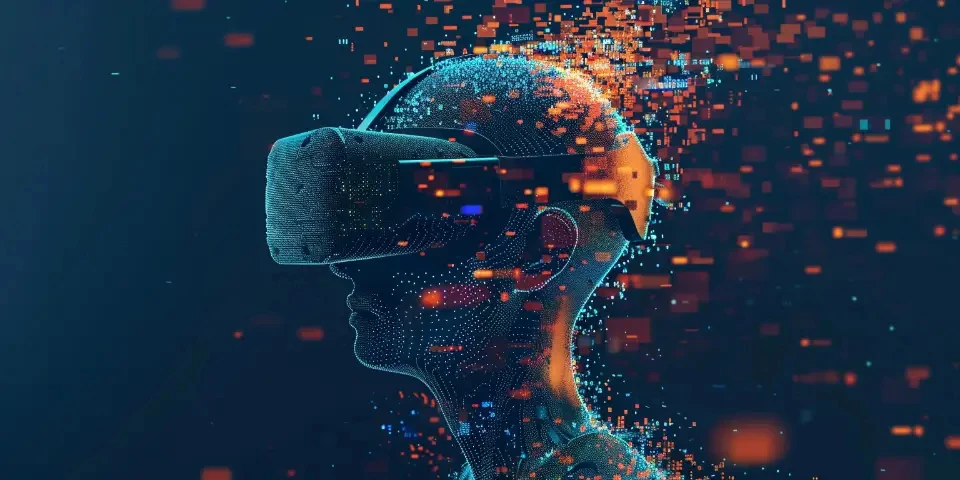Enhancing Learning How AI is Revolutionizing Education
Artificial Intelligence (AI) has become an integral part of our daily lives, transforming various sectors including healthcare, finance, and transportation. Another area where AI is making significant strides is education. From personalized learning to intelligent tutoring systems, AI is revolutionizing the way we learn and acquire knowledge. In this article, we will explore how AI is enhancing learning in education from various perspectives.
1. Personalized Learning
One of the key advantages of AI in education is its ability to provide personalized learning experiences. AI-powered algorithms can analyze vast amounts of data, allowing educators to tailor educational content to each student's unique needs. Through adaptive learning platforms, students can receive customized lessons, practice exercises, and feedback, enabling them to learn at their own pace.

Furthermore, AI algorithms can detect patterns in student performance and identify areas of weakness. This information can then be used to develop targeted interventions and support systems for struggling students, maximizing their chances of success.
2. Intelligent Tutoring Systems
Traditional classroom settings often struggle to provide individual attention to students due to large class sizes. AI-powered intelligent tutoring systems are changing the game by acting as virtual tutors. These systems can provide real-time guidance, answer questions, and offer explanations that are tailored to each student's level of understanding. They can adapt their teaching approach based on the student's progress, helping them overcome difficulties and grasp complex concepts more effectively.
Some popular intelligent tutoring platforms include Carnegie Learning's Mika, Duolingo, and DreamBox Learning, each offering unique features to facilitate personalized learning experiences.
3. Automated Grading and Feedback
AI technology is automating the grading process, saving teachers valuable time and allowing them to provide prompt feedback to students. With AI-powered grading systems, multiple-choice or objective questions can be instantly evaluated. This frees up educators to focus on more subjective assessments, such as essays or projects, where human judgment is critical.
Furthermore, AI algorithms can provide detailed feedback to students, not only indicating whether an answer is correct or incorrect but also explaining the rationale behind it. This helps students understand their mistakes and encourages them to improve.
4. Enhanced Content Creation
AI tools are transforming the way educational content is created. Natural Language Processing (NLP) algorithms can generate interactive textbooks, analyze educational resources for relevance and credibility, and also translate content into multiple languages. This enables educators to access a wide range of high-quality learning materials and adapt them to suit their students' needs.
Tools like OpenAI's GPT-3 have gained recognition for their ability to generate human-like text, opening up new possibilities for creating engaging and interactive learning content.
5. Intelligent Data Analysis
AI can analyze vast amounts of educational data, such as student performance, attendance records, and learning patterns, to extract valuable insights. These insights can help educators identify trends, areas of improvement, and potential challenges. By leveraging AI, educators can make data-driven decisions to enhance teaching strategies, curriculum design, and educational policies.
6. Virtual Reality and Simulations
AI-powered virtual reality (VR) and simulations are revolutionizing hands-on learning experiences. Virtual labs and simulators can provide students with a safe and immersive environment to practice complex tasks and experiments. For example, medical students can simulate surgical procedures, allowing them to gain practical skills without the risk associated with real-life surgeries.
7. Intelligent Content Recommendation
AI algorithms can analyze a student's learning patterns, preferences, and performance to provide personalized content recommendations. These recommendations help students discover additional resources, books, articles, or videos that align with their interests and learning goals. By tailoring the learning experience to individual students, AI promotes motivation and engagement.
8. Assistive Technologies for Special Needs
AI-powered assistive technologies are making education more inclusive for students with special needs. Speech recognition algorithms can enable students with speech impairments to communicate effectively. Text-to-speech systems make educational resources accessible to visually impaired students. AI-powered virtual assistants can support students with learning disabilities, providing reminders and assistance whenever needed.
Frequently Asked Questions
1. Will AI replace teachers in the future?
No, AI will not replace teachers. While AI can enhance and automate certain aspects of education, the role of a teacher in guiding and inspiring students cannot be replaced by technology. Educators will continue to play a vital role in facilitating critical thinking, nurturing creativity, and providing social-emotional support to students.
2. How can AI help students who are struggling academically?
AI can provide personalized interventions and support systems for struggling students. By analyzing their performance and identifying areas of weakness, AI algorithms can offer targeted resources, exercises, and feedback to help students overcome academic challenges.
3. Is AI only beneficial for higher education?
No, AI is beneficial for all levels of education, from primary school to higher education. The use of AI can improve learning experiences, adapt curriculum to individual needs, and support teachers in delivering quality education across all educational levels.
References:
1. Taylor, M. R., & Veletsianos, G. (2020). Artificial Intelligence in Education: Promises and Implications for Teaching and Learning. Postdigital Science and Education, 2(3), 713-725.
2. Heffernan, N. T., Heffernan, C. L., Channell, J. J., & Titterton, M. (2016). The ASSISTments Ecosystem: Building a Platform That Brings Scientists and Teachers Together for Decreasing the Learning Gap and Scaling Up. In International Handbook of IT in Primary and Secondary Education (Vol. 20, pp. 309-337). Springer, Cham.
Explore your companion in WeMate